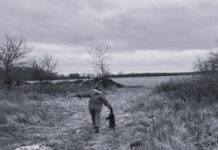By SUSAN CROWELL
I will never forget the light in Darrel Cubbison’s eyes when he told me about his 4-H epiphany.
“Cubby,” as the Muskingum County man is known to friends, shared his story with me many years ago at a state Extension advisory committee meeting.
Now retired, Cubby worked at the Guernsey-Muskingum Electric Co-op. He’s served on the Muskingum County fair board for more than 30 years, and supported OSU Extension and specifically 4-H for years with his leadership, including the Ohio 4-H Foundation board.
Along the way, he married his work with his passion — Ohio’s youth — in a unique 4-H lamp electrical safety program. He led and taught others to lead scores of hands-on sessions, where youth learned about electrical safety, and then made their own lamp with a pop can base. I’m guessing there are hundreds, if not thousands, of these lamps across Ohio, thanks to Cubby’s inspiration.
Now Muskingum County is pretty rural, and Cubby had always supported the “traditional” view of 4-H clubs and membership. But then, he told me, someone asked him to conduct one of the lamp sessions for a group of urban youth.
By the close of that session, when he watched urban children getting as excited about their own lamp creation as all those rural youth he’d taught over the years, he realized the value of 4-H goes well beyond the farm kids. Everyone deserves a chance to “learn by doing,” the 4-H slogan.
Cubbison, like other 4-H supporters everywhere, knew that “learning,” that interaction, has more positive outcomes for our future than anything else he could be doing.
It’s more than just a warm fuzzy. Lost in the pre-Christmas madness, a report from the National 4-H Council highlighted how youth involved in 4-H excel, compared to their peers.
4-H’ers (grades 7-12) are four times more likely to make contributions to their communities; two times more likely to be participate in science, engineering and math during out-of-school time; two times more likely to be civically active; and 4-H participants are 1.5 times as likely as youth in other out-of-school programs to report high academic competence. Boom.
This wasn’t a small survey in an isolated region. Over eight years, the Study of Positive Youth Development, conducted by the Tufts University Institute for Applied Research in Youth Development, collected data from more than 7,000 students and 3,000 parents across grades 5-12 in 42 states (45% rural; 20% urban; 35% suburban).
Overall, the study looked at the five C’s — competence, confidence, connection, character and caring — and the role those attributes have on a sixth C: contributions to self, family, community and society.
What researchers found is that even though we think by the time a child’s a teen it’s too late to influence meaningful change in his life, it’s not. Adolescents can be significantly influenced by factors in their homes, schools and communities.
The real keys, researchers discovered, are three things: First, positive and ongoing relationships between youth and adults; second, activities that building important life skills; and third, opportunities for youth to use those skills as both participants and as leaders in activities.
Although the initial study is complete, researchers are hoping to follow some of these respondents into adulthood, to be able to truly track, in a science-based way, the impact of 4-H.
Anecdotally, we probably all know of youth (now adults) who tell us their lives were influenced by 4-H. It’s good to have research data on our side, too.
Adults, we all have it within our power to build a better tomorrow. Just ask Cubby. It’s called 4-H.
By Susan Crowell












We all knew people like Cubby, in Portage County it is Frances Patterson who has devoted a lifetime to helping 4H. Finding horses, helping children experience 4H has been a lifetime dedication for Frances!
Thanks for the positive article about 4-H and Cubby! By the way, we have one of those lamps from Muskingum County.